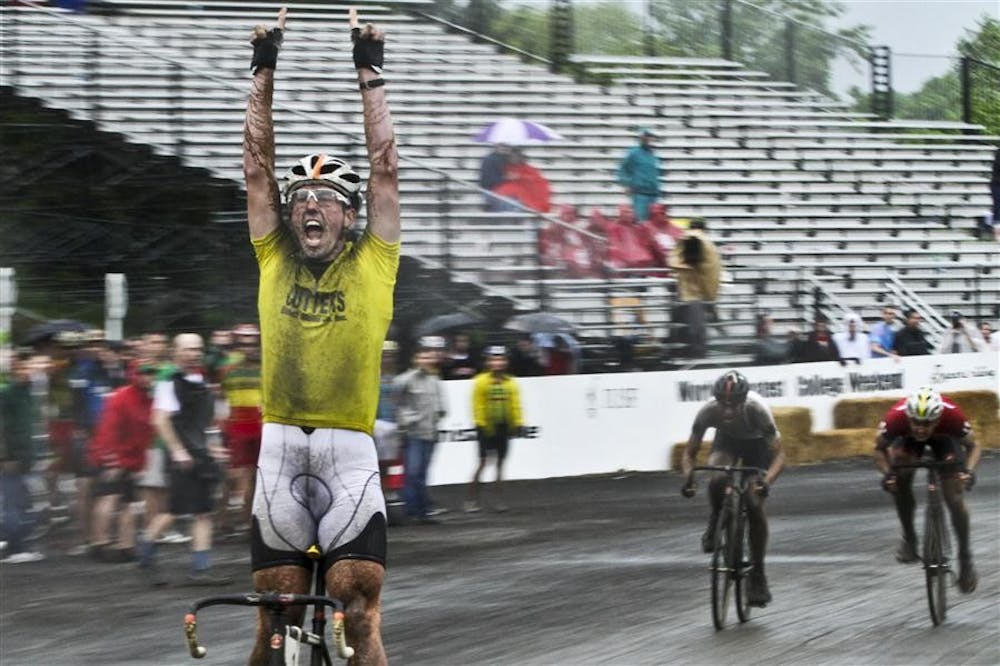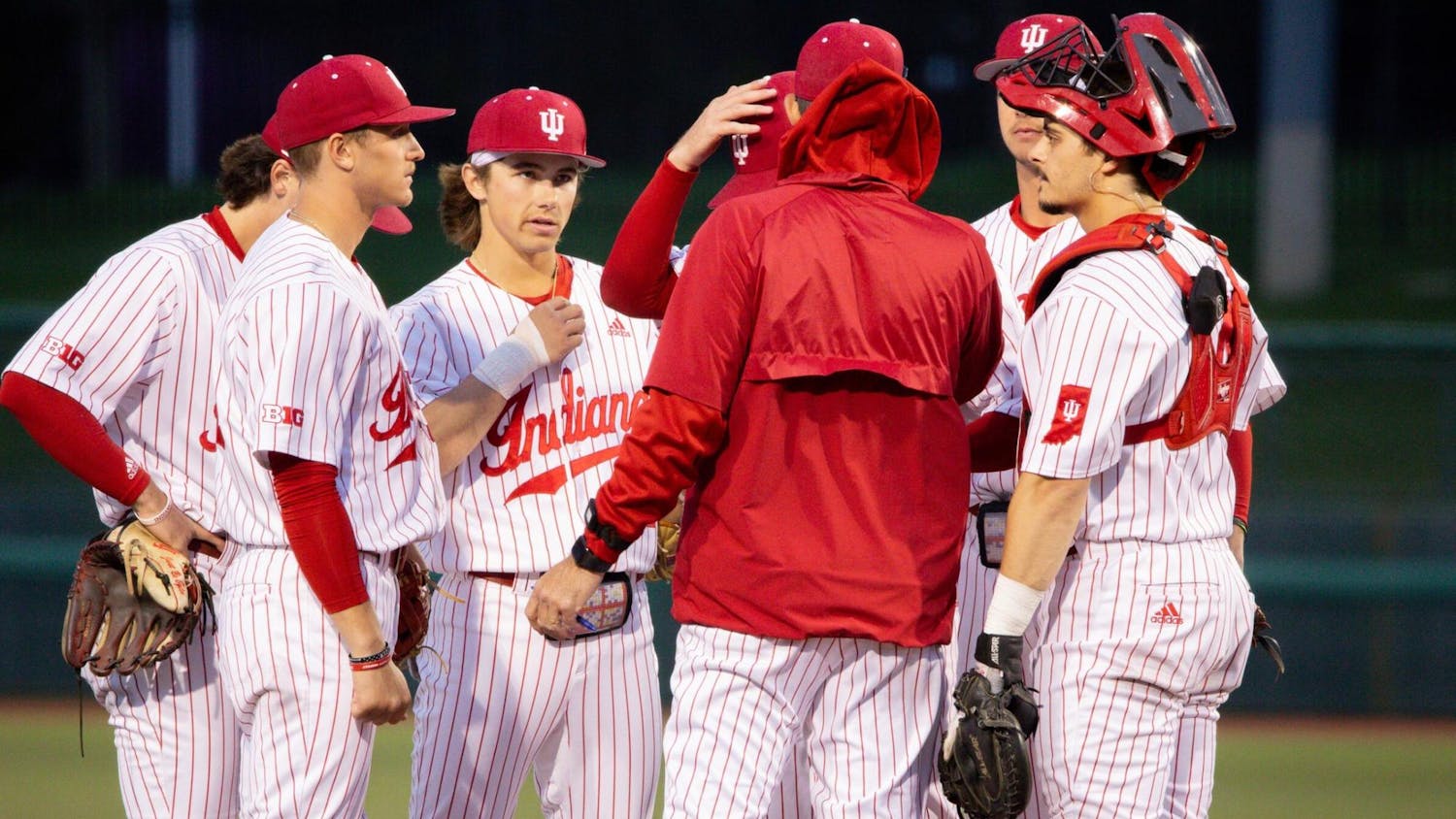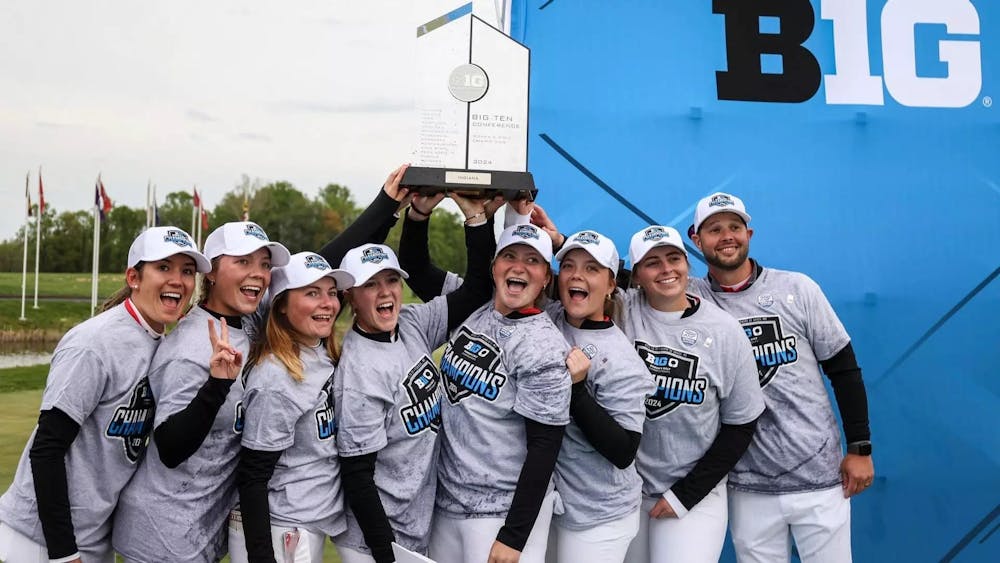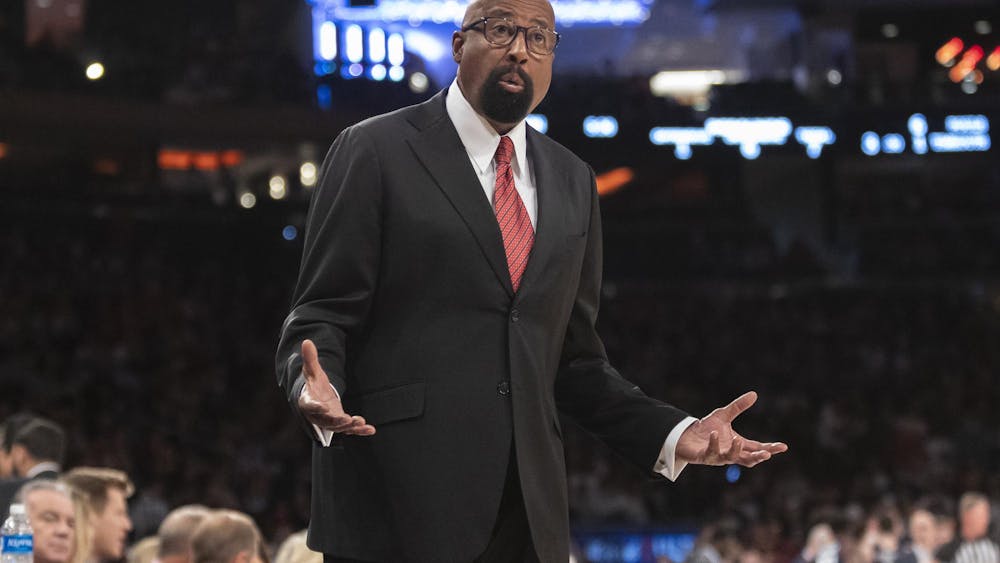Before he was a cyclist, Eric Young was a runner. Now, Young sprints — but with a Schwinn bicycle around the Bill Armstrong Stadium cinder track, often creating a gap between his back wheel and the field behind him.
Before Young became a member of the heralded Cutters team, the Illinois native had never heard of the race that so many in the cycling world covet. Young, though, learned quickly upon his arrival in Bloomington of the Little 500. He looked at the results from the previous year’s race, and his current team, the Cutters, had won. Young called them and asked if he could be a member of their team.
A dynasty was born.
But before he became part of history for a team that has now scored four straight Little 500 victories, Young never thought he would cross the finish line of the biggest collegiate cycling race first, let alone two years in a row. He was just never that guy.
Now he is that guy — the rider that fans and the media talk about, write about and debate about.
But Young sees himself as just a guy who has won a bike race.
“I understand that whatever, the Little 5 is pretty crazy and winning four in a row and I crossed the line first twice in a row, that it’s pretty cool and pretty extraordinary, but I don’t know,” Young said, his voice trailing the longer he talked. “From my perspective I’ve never been really good at anything, like excellent at anything before, so it’s kind of weird to me that people make a big deal about it.”
Young has been the Cutters’ go-to rider to finish for the last two Little 500 titles. He went from a category-three rider to a category-two rider this week, but he will still be allowed to compete in his final Little 500 in 2011.
So far, Young hasn’t broken a single rule, at least according to IU Student Foundation standards.
IUSF’s Little 500 Rules of Eligibility Section II.I states that a student with no cycling experience prior to attending IU can participate in the Little 500 and can upgrade to a category-one or -two rider for only a year. That rider must ride with their team from the previous year..
Next year is Young’s final Little 500, and he will ride for the Cutters.
But is it really fair that a category-two rider, considered around the cycling community as a semi-pro, is allowed to ride in a collegiate intramural event?
The 1995 Little 500 champion and Phi Gamma Delta rider Dave Harstad rode in a similar scenario a little more than a decade ago. During his sophomore year in 1993, Harstad witnessed two incredible category-two riders at the Little 500 track: Ben Sharp of Cinzano and Todd Hancock of Delta Chi.
“Those guys were so fast,” Harstad said. “When you can ride guys off your wheel on a flat course it’s just too much speed. It wasn’t safe or fun for many of the participants.”
The inequality among the field is why Harstad said he still supports the category-two ban, which went into effect in 1995.
“When category-two’s are in the race, I think you run the risk that the event will devolve into an ugly thing where non-category-two teams are basically forced to team up and chase down every burn-out by teams with elite riders,” he said. “And that won’t be fun for anyone.”
The 1997 champion and former Cutter rider Chris Wojtowich did not ride in the Little 500 just for fun. In 2000, he lapped the field. He said he thinks it takes much more than being a category-two rider to win the Little 500.
When Young first came to IU, he was not a bike rider. In fact, Michael Schroeder was the only member of the Cutters who rode before coming to IU.
Wojtowich said everyone on campus had the same opportunity to become just as good a bike rider as Young did.
“People have spent their entire college career focusing on this event, and their dreams should not be taken away from them because they trained too hard and got too good at it,” he said. “I don’t even think it’s an intramural sport. I know it’s called that, but it’s one of the biggest cycling races in the world.”
“I truly believe that anyone should be allowed to race as long as they attend IU as a student. Anybody. Even if he was a professional and he could ride for any team. He doesn’t have to ride for the Cutters — he could ride for a fraternity. I want the best competition possible when I’m racing because that way I can know I’ve beat the best.”
Sharp was one of the best in 1993. Now, he coaches the best as Junior Programs Manager at USA Cycling. He came to IU as a category-three rider. At the end of his junior year, he upgraded to category one. He was prevented from riding his senior year because, at the time, riders couldn’t race in category-one competitions and compete in the Little 500.
“If the rider is in good standing with the University, there’s no reason that he shouldn’t be able to ride,” Sharp said. “Everyone else has the same opportunity to work their way up through the ranks. I don’t know who Eric Young is ... but it doesn’t make sense to me that a kid who’s going to school and getting good grades and doing everything that he’s supposed to do can’t participate in his college’s event.”
Pam Loebig, director of the race, is not looking at raising the ban on category-two riders. Loebig said she feels the people who are using Young as a target are also using his decision to go category two against him.
“I think they’re looking for something or rationalize of why Cutters have won four years in a row,” Loebig said. “I think the rule is exactly how it should be. The Cutters are sticking by the rules; they don’t have athletes who are ineligible. They aren’t pushing the limits on what they’re allowed to do. They just want it more than everyone else.”
But some Little 500 fanatics are still trying to figure out where the amateur is in the intramural event.
“It is an intramural event, but you can’t compare it to any other intramural event out there,” Loebig said. “The purpose of it is to raise money for working student scholarships on the Bloomington campus and to be part of the Indiana University tradition to bring students in ... giving them a community ... where they can feel connected to the university and understand that the bigger picture of why they’re here and what they can get out of it.”
Young is not trying to gloat the glory of winning the Little 500 to the 32 other teams on the field. He’s actually embarrassed by being good. In two months of racing last summer, Young won three USA Cycling events, according to USA Cycling’s results.
“I don’t know. A lot,” Young said about the number he actually won. “This sounds bad saying it, but I win.”
A majority of the races he rode in, he won.
“Aw man ... that sounds so bad but yes,” he said.
But Young declines to give the exact number.
“I mean that’s because it’s weird,” he said about not giving the number. “I don’t know. It is weird to stand out.”
But the Monday after the race for the past two years, Young has graced the front page of the newspaper distributed across campus. Even that to him is too much.
“It would be probably weird to you, too,” Young said. “If you go from people not talking to you for papers or anything like that to one week a year everybody knows who you are, it’s kind of weird.”
So this newly turned category-two rider has the Little 500 world bursting at the seams about a ban that went into effect 15 years ago. Some people praise him, other people hate him, but he said he’s just like any double-major in biology and neuroscience who studies and likes to hang out with his friends and his teammates.
“All the guys on the team and the people associated with the team, we’re all very passionate about learning about Little 5,” Young said. “That’s what college is really for, it’s about learning about things, learning about yourself and preparing you for whatever life you want to lead afterward.”
Category 2 'semi-pro' riders create controversy in Little 500

Get stories like this in your inbox
Subscribe





